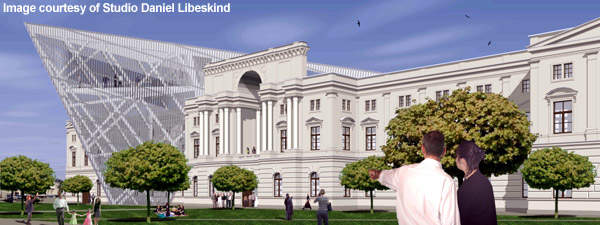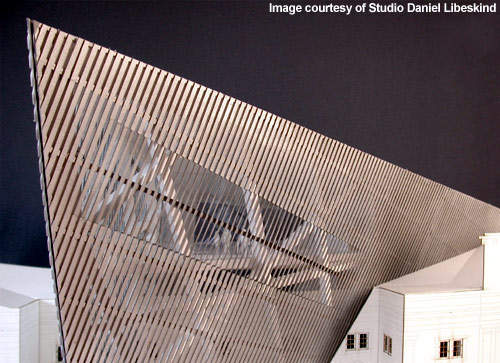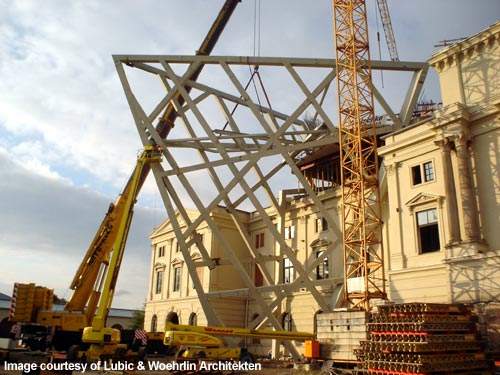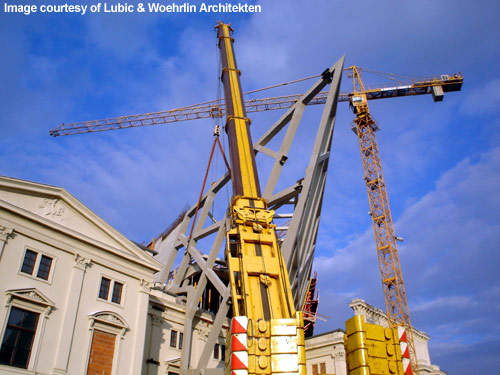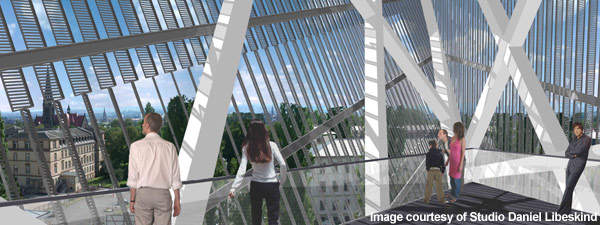Dresden’s eventful architectural history witnessed another important mark on its timeline with the construction of the Military History Museum located in the city’s northern outskirts.
Designed by US-based architects Studio Daniel Libeskind, the museum occupies the existing old German arsenal building and involved both the building’s refurbishment and a contemporary architectural extension.
Project architect Daniel Libeskind, originally from Poland, designed a wedge-shaped structure made of concrete, steel and glass that literally cuts through the centre of the old Neo-Classical building, rises above it and resembles an arrow pointing to the old city centre.
The €48m Military History Museum became the official central museum of the German Armed Forces (Bundeswehr). It houses an exhibition area amounting to around 20,000m², making it Dresden’s largest museum. Construction of the museum, built on a 24,000ft² site, began in August 2004 and the building opened to public in October 2011.
Museum design competition
The Federal Republic of Germany (Bundesrepublik Deutschland) held a competition for the design in 2001. The brief specified that the old 14,000m² arsenal building is refurbished and incorporated into the overall design. In contrast with other entrants, many of whom designed around the existing building, the winning architect built into it. This created an incision straight through its middle and inserted a symbolic V-for-Victory appendage that would take the building to a height of 30.42m and adding 6,000m² of space.
Libeskind’s portfolio of museum designs includes the Imperial War Museum North in Manchester along with a number of European Jewish museums. He sought not just to represent the contrast between old and new, but to symbolise a great number of historical conflicts and symbioses. The new construction aims to elicit a shift in the frame of mind of both visitors to the museum, as well as the people of Dresden and Germany itself towards accepting the past, and looking forward to the modern democratic future.
The arsenal building itself was once used as a military museum under the Nazis and later under the communist SED party. By daggering the old structure with the contemporary extension, which fittingly resembles a peace sign, Libeskind cuts through Germany’s violent past and puts the country’s recent peace-keeping missions at the forefront. An alternative interpretation of the design is the new section resembling a military fighter jet brutally cutting into the old building, which symbolises a warning against using violence as a solution to violence.
The openness and transparency of the new façade also symbolically stands against the opacity and solidity of the old structure, and the interiors of each section, characterised by grids and columns in the old and free space in the new, being figurative of the transition from an authoritarian past to the present democracy, and the changing role of the military during this time.
Military history exhibition
The museum details German military history and the military history of the German Democratic Republic through the examination of not only the governmental, but also the social implementation of the history of violence.
Everything from collections of tin soldiers to tanks, uniforms, weapons of relations and the first German U-boat are on display.
The delicately handled content focuses on the people who have fought in the military and their families of different eras and generations.

